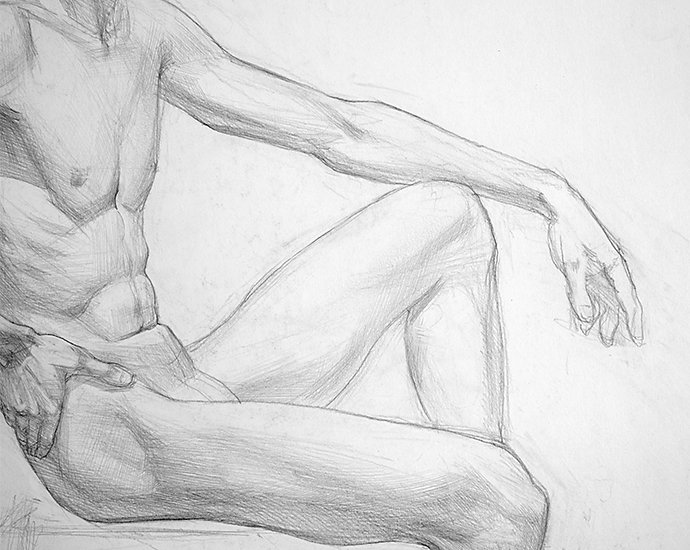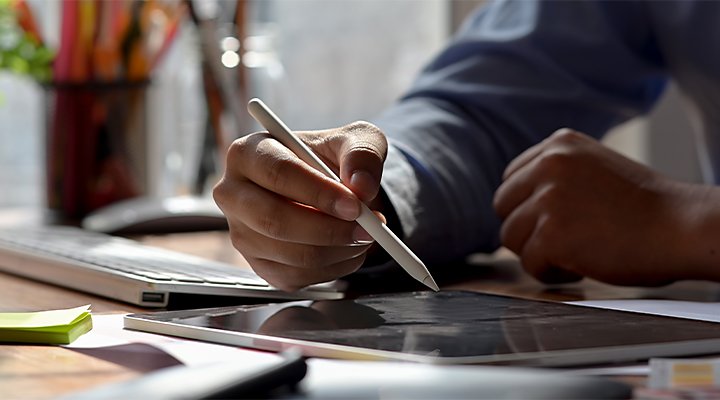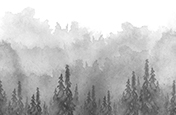How figure drawing can improve your illustration skills.
Learn why this foundational practice, which helps you create accurate human figures, yields lifelong benefits.
?$pjpeg$&jpegSize=200&wid=900)
What is figure drawing?
Figure drawing is the art of sketching the human figure, often done live with a nude model who is standing or sitting in a pose that emphasizes the figure. This process helps the artist capture the essence of the human body’s musculature, texture, and postures. It’s a practice with an emphasis on learning the shape and movement of the human form.
For a studying artist, this skill goes beyond a single figure drawing session. The essence of figure drawing is to attempt to capture life as it really is, or at least as it appears to the artist. Learning to trust and honor the quirks and individuality of perception is the key to understanding illustration. A better understanding of anatomy and gesture drawing through figure study can build your illustration capabilities. Sketching real figures will help you develop your skills as a sketch artist, illustrator, and digital artist.
?$pjpeg$&jpegSize=200&wid=690)

The benefits of figure drawing.
Discover foundational shapes.
Train your eye as an illustrator to discover how to replicate foundational shapes: the line, the oval, the square. It might sound basic, but learning to manipulate these shapes is essential for figure drawing and other forms of drawing too.
While drawing figures can help you more accurately draw human anatomy, perfection is not the ultimate goal. To strive for perfection can leave your drawings feeling static and uninspired. “Avoid straight lines,” says illustrator Shiela Larson. “Always have some type of roundedness to them.” Humans are rarely perfectly symmetrical or proportioned, so drawings that create those symmetries and proportions can seem uncanny or odd.
Take a hand, for instance. It’s composed of many different shapes: the lines of the bone structure and the fingers, the ovals and cylinders that compose the fingers and the palm. When you learn the unique aspects of each of these features, your drawings become more complex and interesting.

Bolster your understanding of anatomy.
When you draw a figure, identify the foundational shapes of the muscles that lie underneath the skin and the bones that are underneath the muscles. This architecture is the basis for movement and gives life to drawings.
Human anatomy is remarkably complex. Capturing the intricacies of its shape is a challenge, one that many people spend a lifetime attempting to master. But if you understand its complexity through deep observation, you develop the tools to simplify and create visual shorthand. Learning to edit the form you’re drawing relies on a bedrock of understanding anatomy.
Movement, weight, balance, and tension.
One of the great benefits of figure drawing is that it pushes the illustrator to capture action, from the movement of the body to the balance between proportions to the tensions that the figure holds in different positions.
It’s all part of regular practice: “You’re working on how the figure rests, learning your basic proportions, and getting a feel for drawing the figure,” says cartoonist Megan Levens, “before you start to exaggerate it and take those forms into foreshortening (drawing objects with less depth to mimic the perspective and angle of human vision) or create a really intense action pose.”
Learn to see living things.
Ultimately, the figure drawing process is designed to help you learn to see living things in natural motion. Learn to convey movement through proportions and practice techniques like foreshortening. They are fantastic ways to create more dynamic drawings. You can also make multiple sketched takes on a single figure to hone your sketching abilities.

Tools and resources for beginners.
It doesn’t have to be painful to start learning how to draw figures. All you need to do is grab a pencil and paper, or a digital pen and tablet, and get going.
- Take a course:
Your local community college or university likely offers figure drawing classes, and there are many nonprofit organizations for the arts that teach them too. If you’re more comfortable working online, there are numerous videos on Behance for life drawing and figure drawing.
- Start drawing from images:
“If I’m doing a pose that I just can’t wrap my brain around,” Levens says, “I’ll look up a photo. The end result will be 10 times better. Sketching quickly, just hammering it out and noodling away, it becomes almost muscle memory.” Drawing with photo references is a great way to start with some basic figure drawing, and you can find plenty of these images in Adobe Stock.
- Use drawing software:
For those looking to work digitally and practice linework with a more precise toolkit, the illustration tools available in Adobe Fresco are powerful ways to begin.
Learn some other fundamentals of drawing.
If you want to bolster your drawing skills, figure drawing is just one place to start. Learn more about the basics of illustration, then explore how to draw eyes, feet, faces, noses, and even check out how to practice comic book art or manga illustration. Each area of focus can help you learn more foundational skills needed for your own artistic journey.
You might also be interested in…
วิธีก้าวไปสู่การเป็นนักวาดภาพประกอบ
เรียนรู้เคล็ดลับการสร้างพอร์ตโฟลิโอและการนำเสนองานศิลปะที่จะช่วยให้คุณเป็นดาวรุ่งในสายอาชีพใหม่
สร้างลายเส้นแปลงที่ลื่นไหลและพื้นผิวที่มีเอกลักษณ์ของสีน้ำด้วยเคล็ดลับเหล่านี้
สร้างผลงานของคุณด้วยการวาดภาพด้วยหมึก
สำรวจข้อเด่นและข้อด้อยของการวาดภาพด้วยหมึกพร้อมเคล็ดลับและเทคนิคเหล่านี้
เรียนรู้เพิ่มเติมเกี่ยวกับการสร้างงานศิลปะและภาพประกอบด้วยประเภทไฟล์อเนกประสงค์นี้



